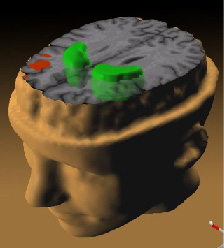A class of recently developed medications for schizophrenia has rapidly become psychiatrists' treatment of choice. Small, pharmaceutical company-funded trials had suggested that the drugs are safer and more effective than a generation of antipsychotic substances that has been used since the 1950s.
A new federally funded study of unprecedented size and length calls into question that conclusion. One of the older medications alleviates schizophrenia symptoms about as well as three of the newer, so-called atypical antipsychotics do, say psychiatrist Jeffrey A. Lieberman of Columbia University and his colleagues.
A fourth atypical antipsychotic, olanzapine, yielded slightly more reduction in symptoms than the other drugs did. However, 9 percent of those receiving olanzapine experienced substantial weight gain and metabolic disturbances that can cause diabetes and shorten life, more than twice the proportion for any other drug in the study.
Two-thirds of patients taking olanzapine stopped using it before the 18-month study ended, but three-quarters of participants randomly assigned to any of the other four drugs halted treatment before the study ended. Patients typically stopped using a drug because of lack of improvement or unacceptable side effects.
Schizophrenia patients typically try several antipsychotics before settling on one. "There's no question that atypical antipsychotics work, but they don't fulfill all expectations," says Lieberman.
Atypical antipsychotics cost up to 10 times as much as the older drugs do. Schizophrenia, which affects roughly 1 in 100 people around the world, is a chronic illness that includes hallucinations, delusions, confused thinking, and severe apathy. Antipsychotic medications primarily quell hallucinations and delusions.
Lieberman's team studied 1,493 patients, 18 to 65 years old, who have schizophrenia. These volunteers were already receiving an antipsychotic medication and various types of psychosocial treatment at any of 57 clinical sites in the United States.
Initial results from the project, which ran from 2001 through 2004, appear in the Sept. 22 New England Journal of Medicine.
Participants began treatment with a new drug, randomly chosen from five medications. The four atypical antipsychotics were olanzapine, quetiapine, risperidone, and ziprasidone; the older drug was perphenazine.
The researchers were surprised to find that muscle rigidity, tremors, and other movement disorders that psychiatrists had primarily associated with older drugs occurred at the same low rate with all five medications tested. The most-common side effects for the drugs included sleep problems, constipation, and decreased sex drive.
Lieberman's data dovetail with earlier U.S. evidence (SN: 2/9/02, p. 83) and with a recent clinical study in England, described at a schizophrenia conference in April. In the latter test, 250 patients with schizophrenia exhibited comparable improvement over 1 year, regardless of whether they had been randomly assigned to receive an atypical antipsychotic or an older drug.
"These results remind us that some people do very well on cheap and cheerful first-generation drugs," says psychiatrist Peter B. Jones of the University of Cambridge in England, who directed the British study.
The new studies "support the view that we have a big problem with all [antipsychotic] drugs," remarks psychiatrist William T. Carpenter Jr. of the University of Maryland School of Medicine in Baltimore. Drug companies still need to develop antipsychotic drugs that ease thinking disturbances and apathy, which play crucial disabling roles in schizophrenia, he says.
Olanzapine-induced weight gain and metabolic changes may be especially dangerous, Carpenter notes, because patients with schizophrenia typically smoke, rarely exercise, and eat poorly. "That scares the hell out of me," he says.
COPYRIGHT 2005 Science Service, Inc.
COPYRIGHT 2005 Gale Group




